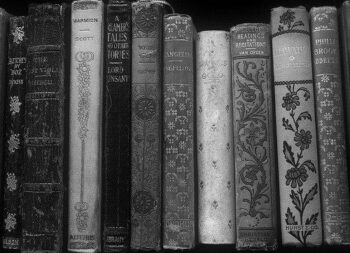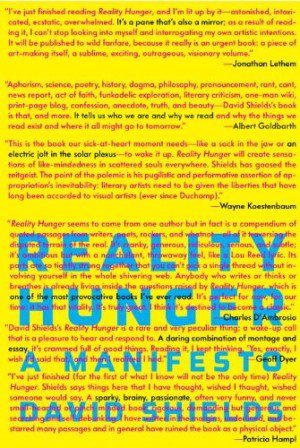
I arrive at my writing group, which this week takes place in the kitchen of one of our group’s members. On the counter is a familiarly shaped bottle, cylindrical, with an inward slant at the top. It’s a whiskey bottle, and the amber liquid glistens. I tilt the bottle back, look at its label.
“Have some,” Heather, our hostess, says.
Despite not having drunk whiskey in I don’t know how long; and knowing I’d find the taste terrible; and knowing it would get me too drunk too quickly, making me a mess by the end of the group, I want a drink of it. I think, when it comes down to it, it’s the visual appeal of the bottle that makes me want some. It’s the package.
A stroll through any grocery store reveals the power of packaging. Take maple syrup. So many different containers. Tall ones, squat ones. Ones made of glass not unlike booze bottles, others in foggy plastic. One bottle has an old-fashioned wire contraption that reseals its lid. Another has a red plastic pop-top I associate with my childhood. It’s easy to argue that one of the biggest factors in people’s choice of syrup is what’s holding it.
Packaging is just as important with books. When purchasing a contemporary novel, I have up to four choices. I can buy the hardback, the paperback, the e-book, or the audiobook. I get the same book every time, but each medium brings a different experience. If I buy the hardback, its stiff nature makes it less likely I’ll take it outside. Also, a hardback typically comes out before the paperback version, so there’s a sense I’m getting an exclusive look. Paperbacks I vaguely associate with my college days. My fondest reading memories are perfectly bound between paperback covers.
Things get more nebulous with e-books and audiobooks. An e-book is never really in my hand but instead digitally available to my eyes. The whole experience strikes me as similar to getting a taste of my favorite maple syrup—same flavor, same texture, same caloric intake—without actually being in the same room with it. Listening to an audiobook isn’t so much like reading a book as hearing a play of the book. I’ve listened to audiobooks and then bought the paperback copy, almost as if the audiobook were a kind of sampler.
If my iTunes account is any indication, I’m far more willing to adopt the digital realm when it comes to making music purchases. The paper and plastic combo of physical CDs has some positive associations for me, but these days I find them clutter-y, just more junk. My wife and I keep our CDs in a wooden case under a table in our living room. By contrast, my bookshelf is displayed prominently in my office, a meticulously ordered work of art.
Probably the most effective kind of “package” a product can have is a recommendation from a friend or another person. Their approval becomes a psychological container that holds the product, affecting my opinion of the contents at least as much as the form in which it arrives. I’m reminded of an offer by writer Steve Almond at the end of his memoir Rock and Roll Will Save Your Life. Almond had collected over 8,000 CDs, and in an effort to get rid of them, he offered to mail anyone a few should they mail him a SASE. I did so, and wound up with CDs by Martin Sexton and Lauren Hoffman. It’s next to impossible for me to listen to either without remembering that Steve Almond, an author I admire, gave them to me—a kind of celebrity endorsement combined with a gift. Both Martin Sexton and Lauren Hoffman get more considered listens from me because of the association.
This kind of mental/emotional packaging stretches beyond product to the realm of knowledge. I’m thinking of the way I react to ideas because of the metaphysical path they arrive on. Let’s consider an idea proffered by David Shields in his nonfiction book Reality Hunger. In it, Shields suggests, among other things, that all art is essentially collage; no one ever really invents anything but only pulls together things that are already out there. Such a philosophy makes Shields believe that copyright laws should be eased or erased, allowing any writer to take large elements from, say, Jonathan Franzen’s latest novel, or rapper Jay-Z from Public Enemy’s lyrics. “Artists have plundered one another since the beginning of time,” he writes. “Copyright has existed only during the last sixty years.”
 This idea in Reality Hunger struck me as not quite right. Yes, much of art involves pulling from other sources, but many artists don’t need to pull directly from copyrighted material to create compelling work. Some can draw a landscape freehand, or write an original short story, or create an as-yet-unheard melody on the piano. These artists deserve to have their work protected by copyright, and if you want to use their work in yours, you should have to deal with them.
This idea in Reality Hunger struck me as not quite right. Yes, much of art involves pulling from other sources, but many artists don’t need to pull directly from copyrighted material to create compelling work. Some can draw a landscape freehand, or write an original short story, or create an as-yet-unheard melody on the piano. These artists deserve to have their work protected by copyright, and if you want to use their work in yours, you should have to deal with them.
I mention this not because you need to know my opinion of Shields’s idea but to show you the kind of consideration I gave an idea that struck me as wrong in the first place. Why did I even bother to construct an argument against it? I think it’s because of the way I found out about Reality Hunger. Where did I first hear of the book? Through the website The Nervous Breakdown, which featured an excerpt and an interview with Shields. So I must have read these and found myself intrigued enough to read the book, right? No. I read the comments on the interview by many in the TNB community, writerly folks who were by and large up in arms about Shields’s ideas. I also noticed Reality Hunger mentioned at another literary site, Arts and Letters Daily, which is more heady and traditional in its angle, frequently including articles on favorites of mine like John Updike and Saul Bellow.
All this discussion created two sensations for me. First, I felt that Reality Hunger was causing a ruckus. Second, it was being taken seriously. The meta-package became too enticing, and I had to know what the book was about. Funny, but I might have ignored the book entirely if I’d read about it on a random blog, or heard about it on a television show or from someone on the street.
Like that whiskey bottle, a compelling package can make you want things you don’t; or like a paperback novel, accent things to make them even more agreeable to you; or like the hype surrounding Reality Hunger, give credence to ideas you’d normally dismiss out of hand. In these cases, the package is almost as important as what’s in it. The trick, it seems, is to never mistake one for the other.
***
Listen to Art read his essay:




